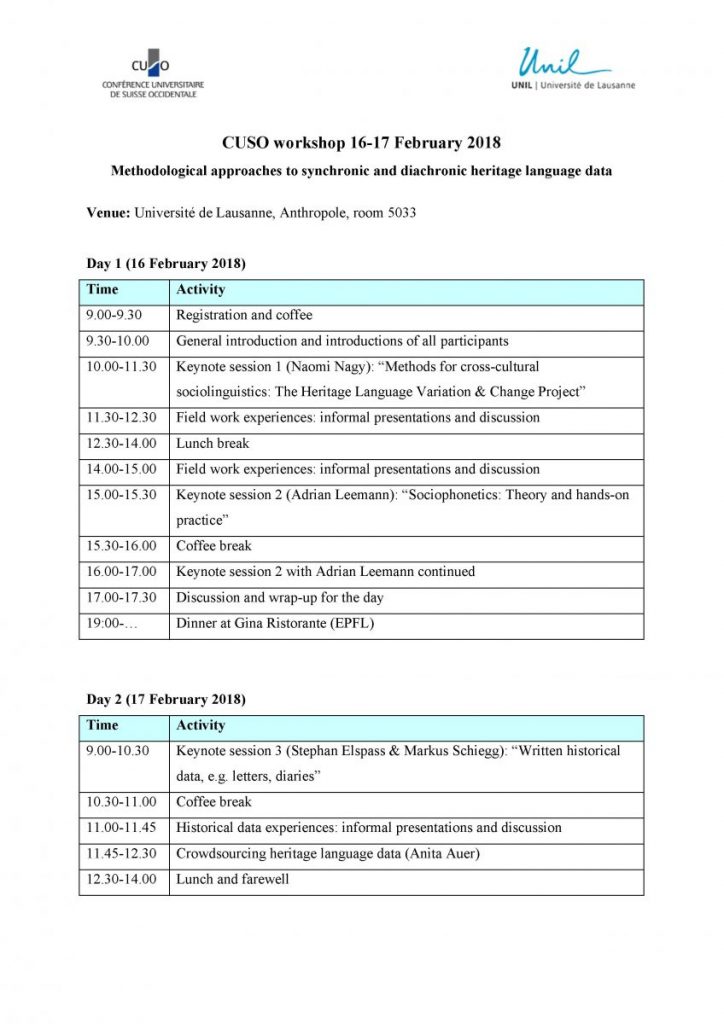The article “Sollte dies mein Geschreibsel meine theure Heymath erreichen”: Linguistic variation in the diary of a nineteenth-century Swiss German migrant” by Ladina Knüsli (UNIL) was published in the Journal of Historical Sociolinguistics 5/2 (2019; special issue on Historical heritage language ego-documents: From home, from away, and from below, edited by Joshua R. Brown, University of Wisconsin – Eau Claire)!
Abstract
Increasing migration from the nineteenth century onwards has led to the production of letters and travel diaries that allowed migrants to stay in touch with their home country. Taking the perspective of ‘language history from below’, this paper focuses on a Swiss variety of written German, as used in the diary of Matthias Dürst, and its status in relation to the standardization of written German, the local dialect, and the new majority language English. The study is couched in pre-immigration socio-economic and educational history. The paper systematically analyzes orthographic and morphosyntactic variation, as well as lexical use that are compared to the findings of Elspaß’s (2005. Sprachgeschichte von unten: Untersuchungen zum geschriebenen Alltagsdeutsch im 19. Jahrhundert. Tübingen: Niemeyer) study on German migrant letters. As the results show, the text contains some influences of dialect, especially concerning diminutives and the lexicon. Moreover, the findings reveal a gradual exposure to English as the new majority language, thus settling within the focus of this special issue on Germanic languages in contact with English. The study of the diary proves once again how valuable ego-documents, and also heritage language ego-documents, are for the field of historical sociolinguistics.

